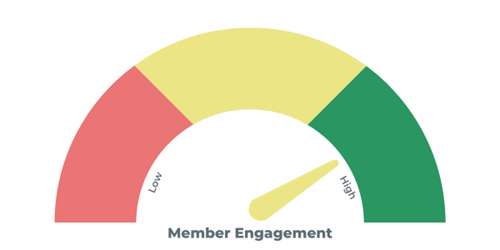Recently, I participated in an online conversation about data analytics methods to evaluate and track member engagement. Understanding how to engage members is critical for associations. In fact, according to the Membership Marketing Benchmarking Report, lack of engagement is the number one reason why members do not renew. Highly engaged members can be relied on to renew and are more likely to volunteer, attend meetings, and make purchases from the association. Identifying members who are not engaged provides an association with the opportunity to intervene before renewal time.

In this discussion, the question was asked: how can engagement best be measured and tracked?
Data analytics offers a solution that some groups now rely on to gain a clearer picture of both engagement levels and engagement drivers. The basic principle is that every behavior done by a member, along with their demographic characteristics, represents either a positive or negative impact on their level of engagement and likelihood to continue with the association. Each of these data points can receive a score. For example, emails that are not opened or clicked produce a negative engagement score. However, active participation on a community platform may produce a positive score. On top of this, the analysis can include the frequency of interactions, recency of activity, and the amount of dollars spent.
Once the analysis assigns positive or negative values to each data element, the points roll up to produce a total score for each member. The members are then arrayed from most to least engaged and grouped into deciles. The top deciles include the very committed members. The goal, then, is to leverage the interaction with the most engaged members and to intervene with those in the lower deciles by encouraging the behaviors that correlate with better engagement.
As planning for this process begins, it is critical to answer some foundational questions. First, decide what data to include in the scoring. You can start by including as many data points as you can track and lean on regression or other analyses to sort through them and identify the behaviors that significantly affect engagement and retention. Decide whether the data will be limited to what resides in your association's AMS or should you add third-party demographic and firmographic (company) data. Next, review how you will maintain and update the scoring. Finally, plan how your association will use the findings once the process is complete.
Associations invest considerable efforts in member recruitment. However, ongoing success comes from engaging members after they join. By defining fully engaged members and those at risk, associations can craft engagement strategies that best serve these segments to build long-term member satisfaction and loyalty.